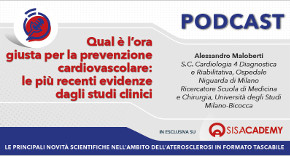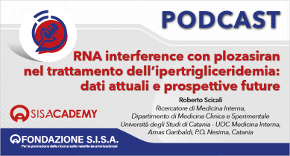 Rivista in lingua italiana
Rivista in lingua italiana
riservata ai Soci SISA
Ultimo numero:
Anno 16 • N.1/2025
Abstract
Global, regional, and national incidence, prevalence, and years lived with disability for 310 diseases and injuries, 1990–2015: a systematic analysis for the Global Burden of Disease Study 2015
GBD 2015 Disease and Injury Incidence and Prevalence Collaborators
Lancet. 2016;388:1545-1602
BACKGROUND: Non-fatal outcomes of disease and injury increasingly detract from the ability of the world's population to live in full health, a trend largely attributable to an epidemiological transition in many countries from causes affecting children, to non-communicable diseases (NCDs) more common in adults. For the Global Burden of Diseases, Injuries, and Risk Factors Study 2015 (GBD 2015), we estimated the incidence, prevalence, and years lived with disability for diseases and injuries at the global, regional, and national scale over the period of 1990 to 2015.
METHODS: We estimated incidence and prevalence by age, sex, cause, year, and geography with a wide range of updated and standardised analytical procedures. Improvements from GBD 2013 included the addition of new data sources, updates to literature reviews for 85 causes, and the identification and inclusion of additional studies published up to November, 2015, to expand the database used for estimation of non-fatal outcomes to 60?900 unique data sources. Prevalence and incidence by cause and sequelae were determined with DisMod-MR 2.1, an improved version of the DisMod-MR Bayesian meta-regression tool first developed for GBD 2010 and GBD 2013. For some causes, we used alternative modelling strategies where the complexity of the disease was not suited to DisMod-MR 2.1 or where incidence and prevalence needed to be determined from other data. For GBD 2015 we created a summary indicator that combines measures of income per capita, educational attainment, and fertility (the Socio-demographic Index [SDI]) and used it to compare observed patterns of health loss to the expected pattern for countries or locations with similar SDI scores.
FINDINGS: We generated 9·3 billion estimates from the various combinations of prevalence, incidence, and YLDs for causes, sequelae, and impairments by age, sex, geography, and year. In 2015, two causes had acute incidences in excess of 1 billion: upper respiratory infections (17·2 billion, 95% uncertainty interval [UI] 15·4-19·2 billion) and diarrhoeal diseases (2·39 billion, 2·30-2·50 billion). Eight causes of chronic disease and injury each affected more than 10% of the world's population in 2015: permanent caries, tension-type headache, iron-deficiency anaemia, age-related and other hearing loss, migraine, genital herpes, refraction and accommodation disorders, and ascariasis. The impairment that affected the greatest number of people in 2015 was anaemia, with 2·36 billion (2·35-2·37 billion) individuals affected. The second and third leading impairments by number of individuals affected were hearing loss and vision loss, respectively. Between 2005 and 2015, there was little change in the leading causes of years lived with disability (YLDs) on a global basis. NCDs accounted for 18 of the leading 20 causes of age-standardised YLDs on a global scale. Where rates were decreasing, the rate of decrease for YLDs was slower than that of years of life lost (YLLs) for nearly every cause included in our analysis. For low SDI geographies, Group 1 causes typically accounted for 20-30% of total disability, largely attributable to nutritional deficiencies, malaria, neglected tropical diseases, HIV/AIDS, and tuberculosis. Lower back and neck pain was the leading global cause of disability in 2015 in most countries. The leading cause was sense organ disorders in 22 countries in Asia and Africa and one in central Latin America; diabetes in four countries in Oceania; HIV/AIDS in three southern sub-Saharan African countries; collective violence and legal intervention in two north African and Middle Eastern countries; iron-deficiency anaemia in Somalia and Venezuela; depression in Uganda; onchoceriasis in Liberia; and other neglected tropical diseases in the Democratic Republic of the Congo.
INTERPRETATION: Ageing of the world's population is increasing the number of people living with sequelae of diseases and injuries. Shifts in the epidemiological profile driven by socioeconomic change also contribute to the continued increase in years lived with disability (YLDs) as well as the rate of increase in YLDs. Despite limitations imposed by gaps in data availability and the variable quality of the data available, the standardised and comprehensive approach of the GBD study provides opportunities to examine broad trends, compare those trends between countries or subnational geographies, benchmark against locations at similar stages of development, and gauge the strength or weakness of the estimates available.

Area Soci
Eventi
39° Congresso Nazionale
 39° Congresso Nazionale
39° Congresso NazionaleRoma, 23-25 novembre 2025
Save the date




 Spring Meeting Gruppi Giovani SID, SIGG, SIIA, SIMI, SIPREC, SISA
Spring Meeting Gruppi Giovani SID, SIGG, SIIA, SIMI, SIPREC, SISARimini, 6-8 aprile 2025
[continua a leggere]
 SISA LIPID ACADEMY - Corso avanzato di lipidologia clinica
SISA LIPID ACADEMY - Corso avanzato di lipidologia clinicaModena, 4-5 Luglio 2024
[continua a leggere]Giornale Italiano Arteriosclerosi
HoFH today
 Rivista Italiana della
Rivista Italiana della
Ipercolesterolemia
Familiare Omozigote
Anno 6 • N.1/2024
Rivista NMCD
Diateca
[continua a leggere]
[continua a leggere]
Newsletter
il vostro indirizzo di posta elettronica
Progetto LIPIGEN

Nuovo sito dedicato al Progetto LIPIGEN
Progetto LIPIGEN - Vecchio portale
E' necessario essere loggati come utente
Lipigen per poter accedere alla pagina
PROject Statin Intolerance SISA
PROSISA – PROject Statin Intolerance SISA
E' necessario essere loggati come utente
PROSISA per poter accedere alla pagina
GILA - Lipoprotein Aferesi
Gruppo Interdisciplinare Lipoprotein Aferesi
(Accesso Gruppo GILA-Lipoprotein Aferesi)
E' necessario essere loggati come utente del Gruppo GILA per poter accedere
Gruppo Interdisciplinare Lipoprotein Aferesi
(Documentazione ad accesso libero)
Pagina informativa per medici e pazienti










